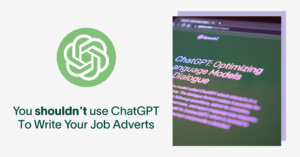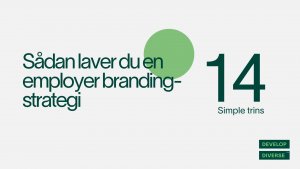From next year, organisations across the EU will be required to report publicly on their impact — on society, their workforce, the environment, and their diversity and inclusion efforts.
From a legal perspective, checking the compliance box is critical — but with the right planning, data, and strategy, organisations have an opportunity to move beyond compliance and actually move their DEI agenda forward at the same time.
The key is integrating their compliance efforts with their HR, talent, and DEI strategy. In this post, we outline how compliance connects to DEI, and explore four practical ways organisations can integrate these two processes more effectively.
How do talent acquisition and HR compliance overlap with diversity, equity, and inclusion?
“EU organisations are facing an increasingly long list of regulatory and compliance requirements as a result of the CSR Directive (CSR-D), as well as other regulations that have already come into effect,” explains Jenifer Clausell Tormos, founder and CEO of Develop Diverse. “Many of these compliance reporting requirements overlap with how successfully your organisation is able to support inclusion.”
Under the CSR Directive, organisations will be required to report on a number of diversity, equity, and inclusion related metrics, including:
- Gender pay gap: Depending on company size, organisations will be required to report on their pay gap each year, or every three years. New legislation also states that if pay reporting shows a gender pay gap of at least 5%, employers must conduct a pay assessment and may be subject to a fine.
- Board diversity: Women must make up 40% of non-executive directors, or 33% of all board members of listed companies.
- Disability: Organisations must report on their employment and inclusion of people with disabilities, and provide detail on any accessibility measures implemented.
- Workforce conditions: Organisations must report on factors relating to their employee experience, including working conditions, training and skills development, works councils, and health and safety measures, as well as any possible risks regarding employment and income.
“The new EU reporting guidelines touch everything in your employee lifecycle, from talent acquisition to retention and DEI,” Jenifer says. “From next year, reporting this information will no longer be a nice-to-have — it’ll be a legal requirement.
“From the DEI perspective, organisations will need to be able to show that they’re doing something. They will be required to set inclusion and belonging targets, measure their success, and report on their outcome.”
4 ways to integrate CSR Directive compliance requirements with DEI strategy
The goal of CSR-D is to get organisations thinking more deeply about the impact their organisation has across a number of factors, including the environment, their customer and supplier relationships, and their workforce.
But Jenifer says, once organisations have done the work to establish effective DEI reporting workflows, the logical next step is to use that data to drive inclusion forward.
“This legislation represents an opportunity to advance DEI beyond compliance,” says Jenifer “As more and more organisations become aware of its importance, it will leave the door open for them to pursue certification, work on their culture, and move DEI forward in ways beyond just reporting the bare minimum.”
1. Use diversity metrics to understand your biggest challenges.
With the CSR-D mandating that organisations must report on their diversity metrics to show their workforce composition, it’s a great opportunity to use this data to identify where your organisation could be doing more to increase inclusion.
“When measuring your diversity numbers, you get a great understanding of how diverse your organisation is,” Jenifer says. “But you can also use this data to understand your biggest bottlenecks in your processes across your business, talent acquisition, and HR.
“For example, when reporting on your board diversity, you’ll get a snapshot of what action you need to take to improve. When you see your workforce diversity figures, you’ll be able to see which processes are contributing to diversity and inclusion challenges, and which employee populations you need to do better to support across your talent acquisition and HR processes.”
Jenifer’s tip: Use your data to identify challenges in different stages of your HR and talent acquisition processes. For example, identify which employee populations are most likely to churn, or which identity groups are most likely to make it through to your interview stage. This will help you identify critical HR and talent bottlenecks.
2. Set measurable strategic goals that support the CSR-D.
Going beyond compliance doesn’t mean just reporting on your data, it’s making an active effort to improve your organisation, and how it interacts with your employees, customers, and suppliers. Once you’ve collected the mandated data on your organisation’s impact, you have a baseline on what you need to do to improve, and set goals to help you get there.
“At this stage, it’s important for organisations to think about how they can set goals that enable them to be genuine in their DEI efforts,” Jenifer says. “Depending on their key business goals and talent strategy, setting measurable goals might include increasing involvement within different communities, or revisiting their supply chain to work with more environmentally-conscious suppliers.
“When we’re talking specifically about talent acquisition and HR, use your data to define measurable KPIs that align with your overall objectives of building a more diverse and inclusive organisation. This could be increasing board diversity by a particular percentage, or amplifying talent acquisition of ethnically marginalised groups.”
Jenifer’s tip: Setting goals that are too ambitious might stall progress towards inclusion. Define strategic DEI goals, before using your data to break these down at a department and team-level, depending on your organisation’s size.
3. Implement talent acquisition and HR ‘quick wins’ and short-term goals that increase inclusion.
Working with measurable outcomes is important to helping your employees, board, and customers see your commitment to progress on DEI. But as your awareness about the importance of DEI moves from compliance to maturity, setting intangible goals is equally as important to progress.
“Setting goals to implement or change smaller processes, like making sure your job adverts are inclusive for example, is just as reporting on the numbers,” says Jenifer.
For some quick inclusion wins in your talent and HR processes, Jenifer suggests:
- Diversifying your internal referral pools, and training internal and external talent acquisition partners on the importance of bringing in more diverse hires.
- Audit your website, careers site, and application form accessibility.
- Identify alternative careers boards, websites, and other methods (like careers fairs or working in local communities) to advertise roles.
- Anonymise CVs to reduce unconscious bias during the selection stage.
- Create structured, unbiased processes for interviews, performance management, employee progression, and compensation reviews.
- Create, support, and fund employee resource groups and affinity groups to help promote belonging.
Check out our ebook, Recruiting for Belonging, for more tips on how to create more inclusive hiring and HR processes.
4. Measure, improve, rinse, repeat — continuously.
Once organisations are comfortable with their DEI data and making positive changes, the most important thing is not to stop doing so. While the CSR-D only requires organisations to report on their data once a year, diversity and inclusion efforts don’t stop when you’re not actively tracking the data.
“You will always keep improving your HR and talent processes as long as you regularly measure and track your employee lifecycle data,” Jenifer says. “Every process and policy at your organisation has a knock-on effect as to how included your employees feel. For example, an unstructured interview process can mean a candidate gets a lower offer, contributing to a pay gap down the line.
“When that person realises they aren’t compensated fairly, it’s likely to impact their performance. That impacts promotion levels, which impacts who takes on a leadership role. It also impacts who leaves, and who stays. Everything is connected — so it’s important to view diversity data in context — and to view it continuously.”
Starting with talent acquisition is just the beginning, but Jenifer urges organisations to see their CSR-D reporting as a launchpad to a long-term commitment on diversity and inclusion. That means they need to track and measure their DEI efforts continuously, not just once a year.
“Diversity without inclusion doesn’t work, and inclusion is a long journey,” Jenifer says. “But when organisations integrate their CSR-D reporting with their DEI strategy effectively and take a continuous approach to their DEI work, they have a chance to really advance inclusion and belonging.”
Find out more about how Develop Diverse can help your organisation meet its CSR Directive reporting requirements and achieve your DEI strategic objectives by booking a demo with our team members today.





